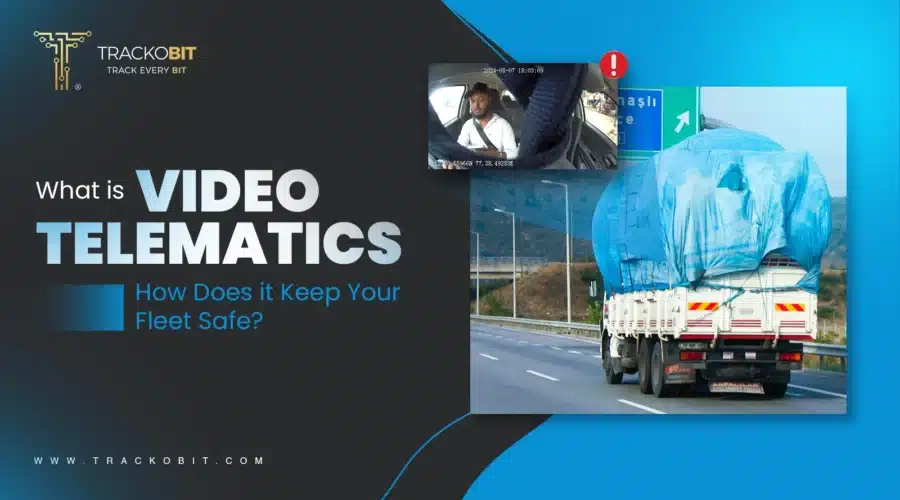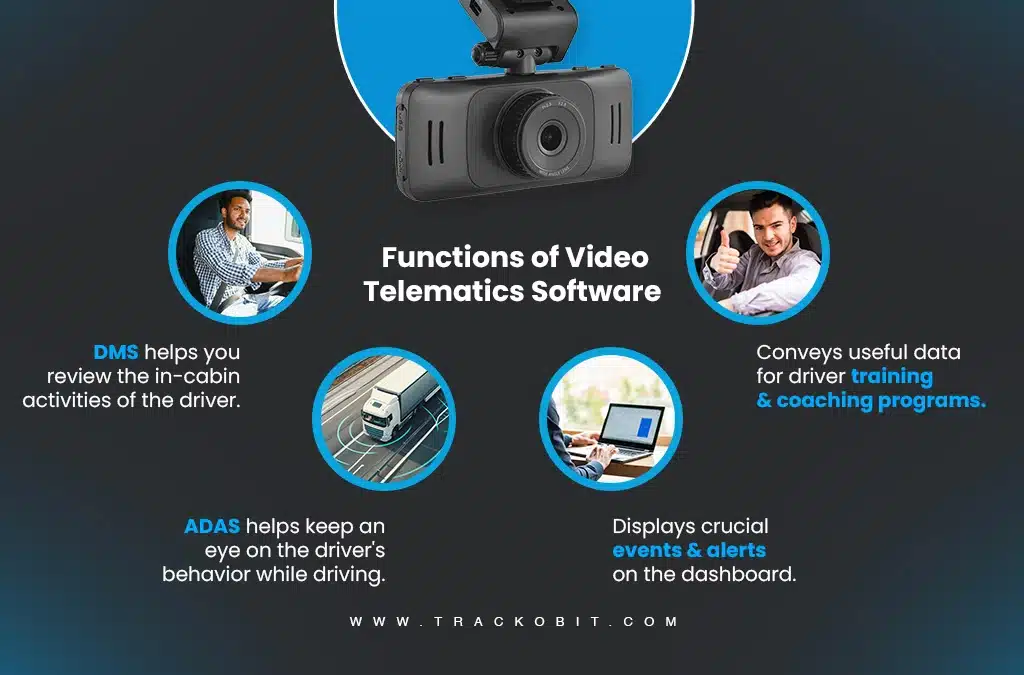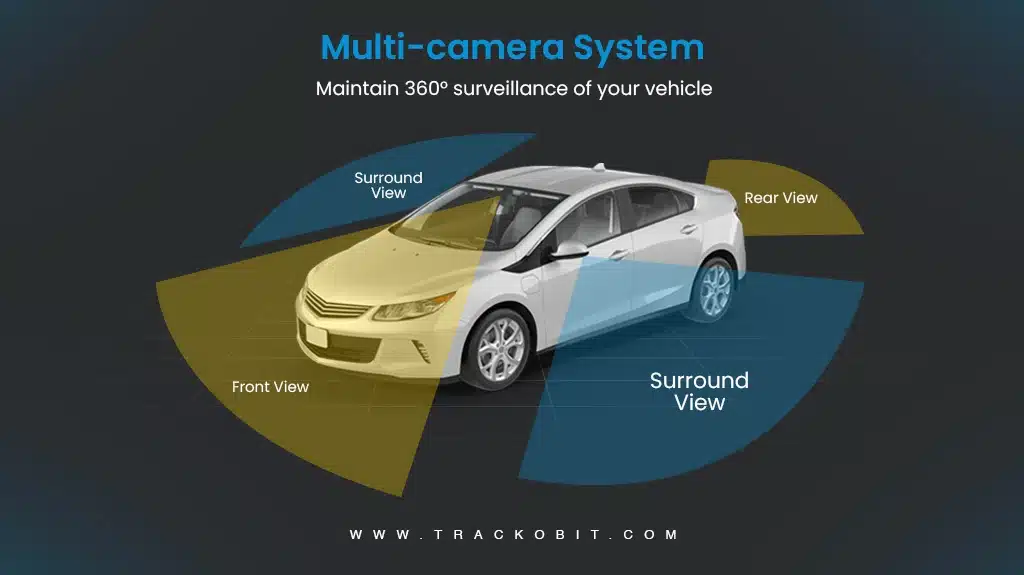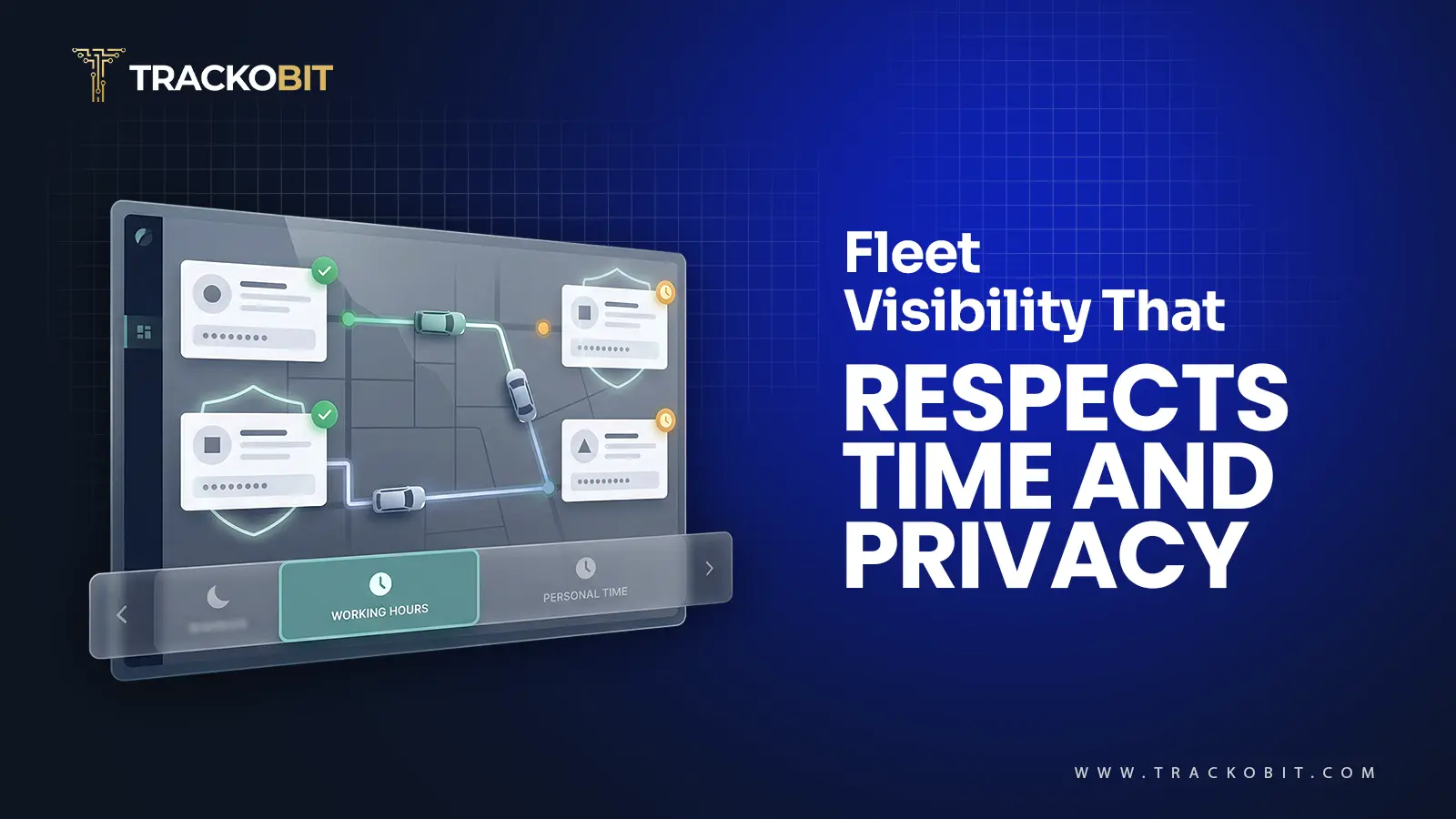-
TrackoBit
Manage commercial vehicles with the new-age Fleet Management Software
TrackoBit -
TrackoField
Streamline your scattered workforce with Field Force Management Software
TrackoField -
Features Resources
-
Blog
Carefully curated articles to update you on industrial trends. -
White Paper
Insightful papers and analysis on essential subject matters. -
Glossary
Explore an alphabetical list of relevant industry terms. -
What’s New
Get TrackoBit & TrackoField monthly updates here. -
Case Study
Explore the cases we solved with our diverse solutions. -
Comparisons
Compare platforms, features, and pricing to find your best fit.
-
About Us
Get to know TrackoBit: our team, ethos, values, and vision. -
Careers
Join the most dynamic cult of coders, creatives and changemakers. -
Tech Support
Learn about our technical support team and services in detail. -
Events
Check out the exhibitions where we left our marks and conquered. -
Contact Us
Connect with us and let us know how we can be of service.
What is Video Telematics? How Does Video Telematics Work?
- Author:Anvesha Pandey
- Read Time:8 min
- Published:
- Last Update: December 26, 2024
Table of Contents
Toggle
Looking for a piece that unfolds what exactly is video telematics software & how it works, followed by how it revolutionizes fleet management across industries.
Table of Contents
Toggle
Dashboards have always been the nerve center of a vehicle. They offer vital stats, signals & updates. But what if you could go beyond the dashboards- tracking every turn, stop & even driver behavior?
This is where video telematics steps in, blending AI with real-time video data to provide unmatched clarity & control. It transforms raw data into actionable visuals, making fleet management smarter & more efficient.
In this guide, we’ll explore the A-Z of video telematics software -how it works, its benefits & much more. So without any further ado let’s get started.
What is a Video Telematics Software? Meaning
Video telematics Software is the updated version of vehicle telematics. It includes video data, vehicle analytics, and geospatial insights.
Vehicle telematics software sends textual alerts. This helps the manager to keep informed of the events.
Whereas, video telematics software powered with advanced ADAS & DMS fetches visual pieces of evidence.
With video telematics joining forces with fleet management software, monitoring superpowers doubled.
It collects information beyond real-time location and vehicle insights via GPS trackers and IoT sensors.
A dashboard camera faces the driver, a camera faces the driver, and another video sensor captures the surroundings. The surroundings include the movement of nearby vehicles, driving behavior, and the surroundings.
DMS – ADAS: The Heart and Soul of Video Telematics
Driver Monitoring System & Advanced Driver Assistance System
Video Telematics is bifurcated into two solutions – DMS & ADAS. As the names suggest, the Driver Monitoring System enables tracking of driver behavior. Whereas the ADAS helps monitor the surrounding movements on the road.
The software does not understand actions; it understands events. Therefore, possible actions of a driver are categorized as events such as smoking, yawning, being distracted, and more. A dashcam captures the driver’s movement, matches it with an event, and generates alerts.
ADAS improves the game a little more. It captures movement in the outside environment and triggers an alert when it spots an event. The technology is useful for insurance claim settlement, driver training, and safety.
How Does Video Telematics Software Work?
Video telematics is a technology that combines a GPS tracking system with AI dash cams for video surveillance.
Here’s a step-by-step breakdown of how video telematics works:

Functions of Video Telematics Software
Step 1- Installation of Hardware Devices
It begins with the installation of cameras, GPS trackers & telematics devices in the vehicle. The dashcams are strategically placed to capture video footage of the driving environment.
This includes both the in-cabin & the surrounding view. The in-cabin view is responsible for gauging the in-cabin activities of the driver & the other for the surrounding view.
Alongside the camera, a GPS device is installed. This device is usually connected to the vehicle’s CAN (Controller Area Network) bus. It collects essential data like vehicle speed, location, fuel usage, and engine diagnostics.
Additionally, cellular networks or Wi-Fi are set up to transmit the collected data and video footage to a central platform in real time.
Step 2- Data Collection
Once the installation process is complete, it is time to collect data. The dashcams start recording video footage. Both ADAS & DMS come into action by recording the vehicle’s surroundings and driver behavior respectively.
Simultaneously, the telematics device collects real-time data from the vehicle.
This includes data such as GPS location, speed, fuel use, and key driver behaviors like harsh braking or sharp turns.
Step 3- Real-Time Monitoring
Live video and real-time telematics data are sent to centralized fleet management software.
You can monitor this data live & receive immediate alerts if any unsafe driving behaviors or incidents occur.
Seems Complicated?
Let us explain this with an example-
For Example- If harsh braking is detected, the system sends an alert. This allows the fleet manager to take quick and appropriate action.
Step 4- Data Analysis
Once the data is collected, it’s time for data analysis. The system helps fleet managers analyze it for insights into driver behavior. Video footage, combined with telematics data, provides a comprehensive view of how a vehicle and its driver operate on the road.
Step 5- Data Storage
Video footage & telematics data are stored to maintain historical data. It can be either in cloud storage or onboard storage. Cloud storage offers easy, remote data access. While onboard storage temporarily holds data until it’s transferred to the cloud.
What are the Benefits of Video Telematics Software?
1. Driver and Consignment Safety
Vehicle and video telematics together is one of the most powerful pairs. As it ensures complete safety for the fleet, drivers, and consignments. They make it easy to monitor vehicle health, driving behavior, and consignment status.
In emergency cases, an alarm goes off, informing the manager of the possible danger.
2. Better Driver Behaviour
You can plan driver training sessions according to the data gathered. How? Address the major problems first. Sort drivers as per their problem areas, and create a plan of action for better efficiency.
3. Reduced Risk of Road Accidents
Distracted driving causes 10% of fatal crashes in the U.S.
Various studies state video telematics reduces accidents and aids investigations.
This is the reason why so many fleet owners are turning to video telematics software to slim such risks.
4. Reduced Costs and Liabilities
Video telematics lowers accident risks, cuts losses & often reduces liabilities. In fact insurers also offer lower premiums for vehicles with advanced security systems.
Claiming insurance also becomes easier when you have video proof of the accident happening. It also reduces liabilities in case of legal matters.
5. Improved Customer Satisfaction
With more security comes more trust. If the customers are content that their goods are in responsible hands they feel more secure.
Even in case of an accident or unforeseen emergency, you can provide the customer with a recorded clip. You can share live streaming with your customers for consignments of especially high value.
Let’s explore the alerts and events you can track with Video Telematics Software, DMS, and ADAS solutions individually.
Alerts and Events You Get with DMS
Driver negligence is one of the biggest concerns of the transportation industry. DMS is the solution to this problem. The risky driver behavior actions are called events in the software world.
AI dashcams powered by telematics systems help detect this risky event and notify the manager in real time. So what are the common events you get in a Driver Monitoring System?
Smoking: When the driver is caught on camera smoking while driving this event is triggered.
Distracted: This event is triggered when the driver is not paying attention to the road, such as looking around instead of focusing ahead.
Drowsy: Drivers often need to drive for long hours across multi-route journeys. This event helps detect drivers who are at risk of falling asleep, ensuring timely intervention for their safety.
Yawning: Frequent yawning indicates driver fatigue. This event is triggered when drivers yawn repeatedly. This allows managers to intervene and ensure they rest before continuing.
Driver Absence: This event identifies when the driver is frequently leaving the cabin for long hours.
Camera Blocking: Sometimes drivers cover the camera intentionally or unintentionally. In such cases, the manager receives an alert for camera blocking.
Alerts and Events you get with ADAS

Multi Camera System
The Advanced Driver Assistance System offers customizable event tracking. This allows you to monitor only the events that matter most.
The following are the most common events offered by the dashcams of the ADAS system.
Forward Collision Alert:
When the driver gets too close to the vehicle in front that they may collide. At this point the sensor beeps, warning the driver to watch out. An instant alert is also sent to the manager, notifying him of an event. The alarm goes off in case the vehicle collides.
Signal Violation:
Violating signals can cause unnecessary challans and risks to the driver’s life and consignment. Get alerts every time the driver violates the red light signal or traffic rules.
Lane Switch Warning:
Drifting between lanes can be dangerous, especially for commercial vehicles, yet drivers tend to take the risk. Therefore, fleet owners and managers rely on video telematics.
Overspeeding:
Overspeeding on a broad and vacant highway and busy city roads are two different things.
However, in both scenarios, it is unsafe to Overspeed. Managers receive alerts every time the vehicle exceeds the set limit.
Why is Investing in a Video Telematics Software Worth It?
Well, it will never be wrong to say the future of commercial vehicles lies with video telematics. Moreover, investing in video telematics software is highly beneficial for fleet management.
The software not only can monitor, analyze, and act on real-time data. It also empowers you to make smarter decisions, protects assets & improves efficiency.
Having said this, undoubtedly video telematics solutions make on-road vehicles secure.
The long-term savings and improvements in fleet management make video telematics a worthwhile investment.
💡 USE CASEEnsuring Safety with a Video Telematics Software The Scenario: ABC is a logistics company. The company operates a fleet of delivery trucks across a large metropolitan area. Their Goal: To prioritize driver & consignment safety while reducing operational risks. Their Challenge: They had been facing frequent driver accidents & damaged consignments due to traffic violations, speeding, or distracted driving. This not only impacted their reputation but also increased costs & insurance claims. What they ultimately did: ABC Logistics partnered with TrackoBit, a leading fleet management solutions provider, to implement their Video Telematics Software. TrackoBit’s solution transformed their operations by offering:
Alerts for unsafe driving behaviors, such as harsh braking, swerving, or distracted driving, are sent directly to fleet managers.
Fleet managers could provide live coaching to drivers, ensuring immediate corrective action.
Built-in video footage allowed quick validation of incidents. This reduces disputes and provides irrefutable evidence for liability claims. The Result: After leveraging the solution, ABC Logistics created a safer driving culture. This further significantly reduced accidents and safeguarded their consignment. Guess what all of this took place while improving operational efficiency and customer trust. |
FAQs on Video Telematics
-
How does Video telematics software improve fleet safety?
It enhances safety by monitoring risky driving behaviors, capturing live footage of incidents & providing actionable alerts for preventive measures.
-
Is Video Telematics suitable for all types of fleets?
Absolutely! It’s versatile and can be customized for industries like logistics, public transport, construction, and more.
-
Can Video Telematics help with driver coaching?
Yes, it provides visual evidence and analytics that help fleet managers identify areas for improvement and train drivers effectively.
-
What kind of data does Video Telematics software provide?
It delivers visual data, location tracking, vehicle performance insights, and behavioral analysis for comprehensive fleet monitoring.
Anvesha is a communication specialist at TrackoBit. With a strong background in media and communications, she adds much-needed balance and brevity to TrackoBit’s... Read More
Related Blogs
-

When Tracking Needs a Clock: Rethinking Fleet Visibility
Tithi Agarwal December 24, 2025Read on to understand why fleet tracking works better when it follows working hours. Because visibility should support operations, not…
-

What Makes TrackoBit’s Video Telematics Software Truly Next-Gen?
Shemanti Ghosh December 17, 2025TrackoBit’s video telematics software blends smart video intelligence with full server control. The result? Superior fleet reliability and safety.
-

Plug, Pair, Perform TrackoBit Introduces BLE Sensor Integration
Tithi Agarwal November 26, 2025TrackoBit’s BLE Sensor Integration enables wireless, real-time monitoring with faster installs and accurate insights. It improves fleet efficiency, visibility, and…
-

How to Use Driver Behavior Reports as a Sales Hook to Close Big Fleets
Tithi Agarwal October 16, 2025TrackoBit’s driver behavior reports empower fleet providers to win big contracts by showcasing safety, efficiency, and measurable ROI.

Subscribe for weekly tips to optimize your fleet’s potential!
Your inbox awaits a welcome email. Stay tuned for the latest blog updates & expert insights.
"While you're here, dive into some more reads or grab quick bites from our social platforms!"Stay Updated on tech, telematics and mobility. Don't miss out on the latest in the industry.
We use cookies to enhance and personalize your browsing experience. By continuing to use our website, you agree to our Privacy Policy.


































